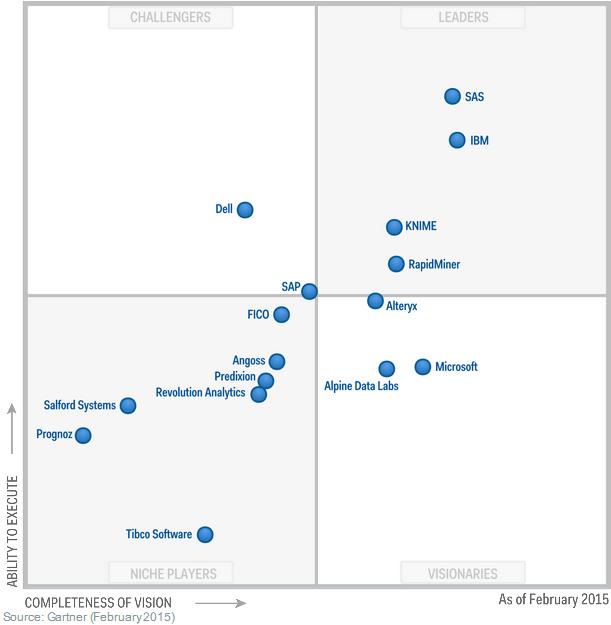Advanced Analytics Platforms Magic Quadrant 2015


Ten (10) categories of functionality:
Data access, filtering and manipulation: This refers to the product's ability to access and integrate data from disparate sources and types, and to transform and prepare data for modeling.
Data exploration and visualization: This refers to the product's ability to visually interact with and explore data, and to perform basic descriptive statistics and pattern detection.
Predictive analytics: The central capability of advanced analytics platforms is facilitation of the synthesis of models that predict future behavior or estimate unknown outcomes using a range of techniques, such as regression, decision trees and ensemble models. It also includes an ability to compare and validate models for selection.
Forecasting: This is a specific type of prediction using time series or econometric methods to predict the value of a variable or outcome at a specified time — for example, sales in the next quarter or the number of calls that a call center will receive next week.
Optimization: This refers to a type of prescriptive analytics that uses a mathematical algorithm to choose the "best" alternative(s) that meet specified objectives and constraints.
Simulation: This is a predictive analytics approach that involves building a model of a system or process to experiment with, or study how, it works with a focus on understanding the range of possible outcomes.
Delivery, integration and deployment: This refers to the ease and speed with which the user can move models from a development environment to a deployment environment.
Platform and project management: This refers to the platform's ability to manage and monitor models in production and to keep track of important data and issues relating to model deployment.
Performance and scalability: This refers to the time required to load data, to create and validate models, and to deploy them in a business.
User experience: This refers to the usability, UI, skill level required to use the platform, and the support provided to users via documentation, guidance and the user community.
